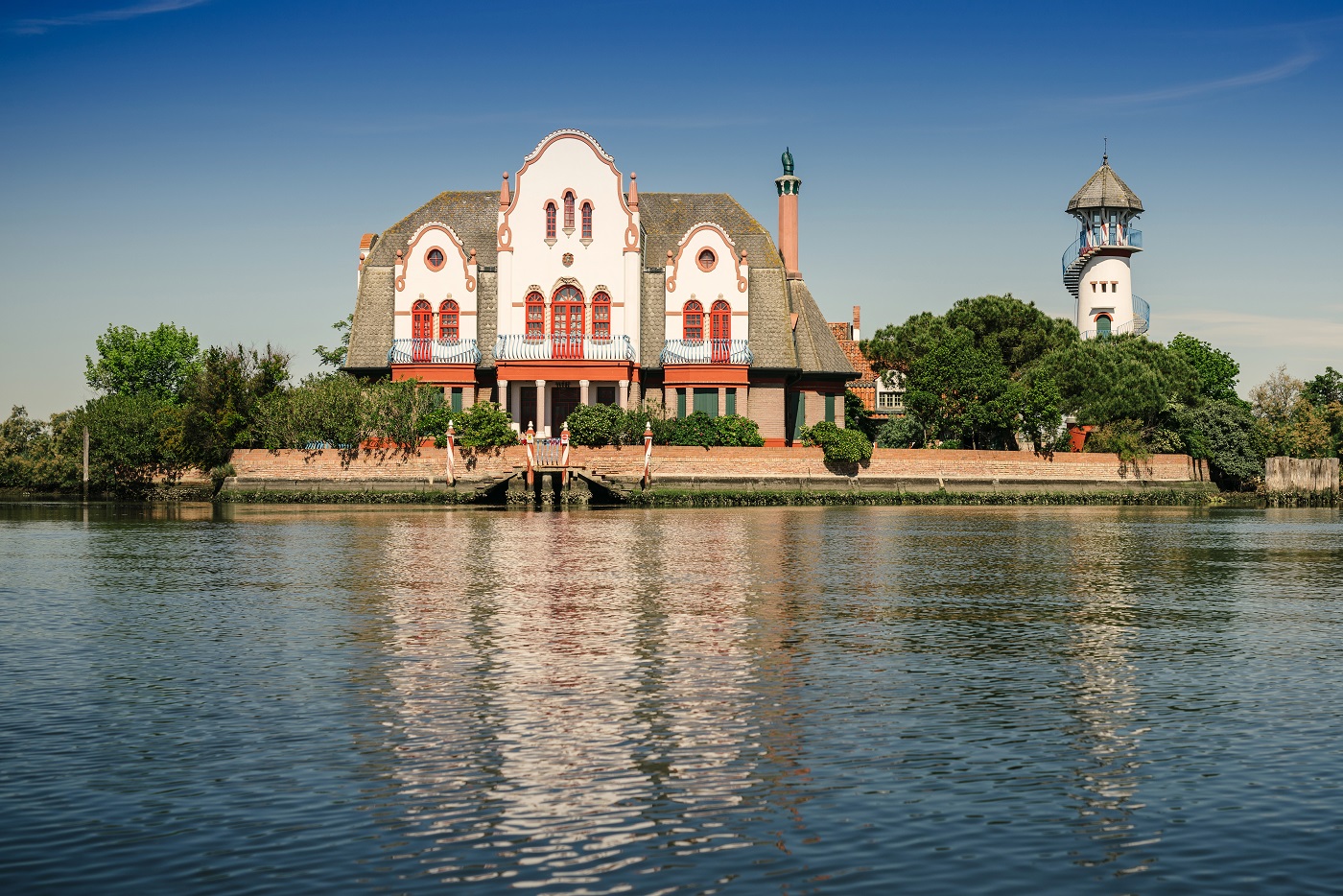A distant influence a stone's throw from Venice
Among the various and suggestive itineraries offered by the natural heritage of the Venetian Lagoon, surely you cannot fail to be attracted and fascinated by the Casone di Valle Zappa: a Dutch touch geographically located between Venice Lido and Chioggia, and belonging to the municipality of Campagna Lupia which, in addition to the own residential area, looks after numerous valleys and natural areas dedicated to culture, breeding, bird watching and hunting.
The splendor of a building that reconciles two different cultures

Built between 1923 and 1928 in a thriving fishing, bird watching and hunting area, in which fields and sandbanks that form particular geometric figures and give a naturalistic heritage of considerable importance, the Casone di Valle Zappa amplifies the splendor and peace in the lagoon mixing a northern European architectural style with harmony and coherence with the surrounding fauna and flora. Although it has nothing to do with the traditional hunting houses of the area, it fits perfectly into the landscape offering a superb but gentle and elegant appearance thanks to the curved and light shapes that are reflected in the water. It was designed at the request of the first owner Mario Malvezzi who agreed with the architect Duilio Torres to carry out a transplant of the Dutch architectural model inside the Lagoon, given the mutual passion of the Northern European style. The charm of the Casone, which reaches the pinnacle of beauty in the times just before and shortly after sunset and which gives life to a chromatic spectacle of incomparable beauty, has struck famous people such as Ernst Hemingway and Salvador Dalì who have spent periods of vacation inside the building. In 1976 it was used as a film set for the film "Portrait of the bourgeoisie in black" by the director Tonino Cervi. Currently the building belongs to the Roncato family, Venetian entrepreneurs in the luggage sector, coming from Padua.
The Northern European architecture of a villa on the water
Inspired by a typical Dutch farm, the Casone di Valle Zappa has a well-kept garden, in which various plant species and fruit trees dwell, which acts as a natural frame for the entire complex including, in addition to the main building, also a "barchessa" and a watchtower for lagoon game (very similar to a lighthouse) with an external spiral staircase and binoculars with which to admire the surrounding landscape: in the area from spring to autumn about 500 specimens of pink flamingos reside that it seems to be watching them fly a show. On the left wall of the facade of the main building there is a marble slab which informs about the date of construction and presents the coat of arms of the Arrigoni degli Oddi family: a praise to the Honorable Count E. Arrigoni Degli Oddi who in just over 45 years demolished over 50,000 birds. The external architectural harmony that reconciles multiple structures connected by a green space also flows into the Casone, proposing each room in a different color. The color of each room is a clear reference to hunting and the primordial function of the structure: a room was assigned to the guests, who spent the night waiting for the hunting trip, according to the color they belonged to. The rooms on the ground floor have a fireplace and numerous sayings and proverbs in dialect are written on each hood. One of the many quotes: "Mejo sbrissar con piè, che co ea lingua", or "Better to slip with your foot than with your tongue", so as not to offend anyone with words.
The location of Campagna Lupia and its interest for the nature
Belonging to the municipality of Campagna Lupia, integrated in the metropolitan city of Venice, the Casone is enhanced by the territory that hosts it by being chosen as the "logo" for the Pro Loco of the same name, with the aim of making discover the cultural and lagoon beauties. Campagna Lupia is a locality of just over 7,000 inhabitants which, in the vast territory that is part of its jurisdiction, houses civil and religious architecture, such as Villa Colonda Marchesini dating back to 1572 and now the town hall, and wet valleys in which it is mainly practiced fishing, including Valle Zappa which houses the Casone and the neighboring Valle Averto, which has become an oasis of WWF Italy.
How to get to the Casone di Valle Zappa
Valle Zappa is one of the fishing valleys of the South Lagoon and can be reached not only by sea, by private boats starting from Chioggia or Venice, also by land, along the Romea state road: it can be reached by a dirt road that from the SS309 Romea continues first towards the Canaletta del Cornio and then towards the Canale della Piovega or Piovego. It is possible to admire all its beauty by arriving by boat after crossing the Canale della Valle Figheri. There are also agencies that organize pleasant half-day or full-day tours that cross the entire southern area of the lagoon.










Lascia un commento